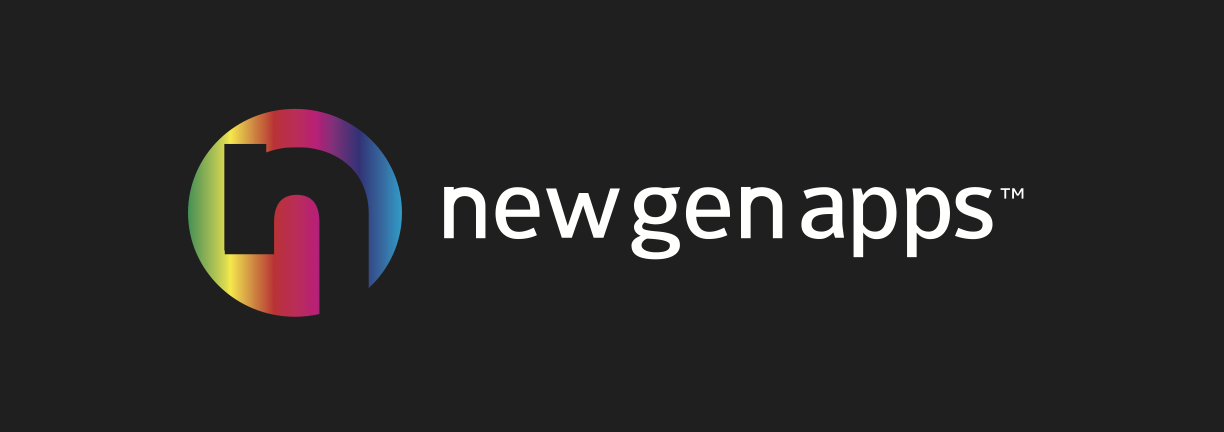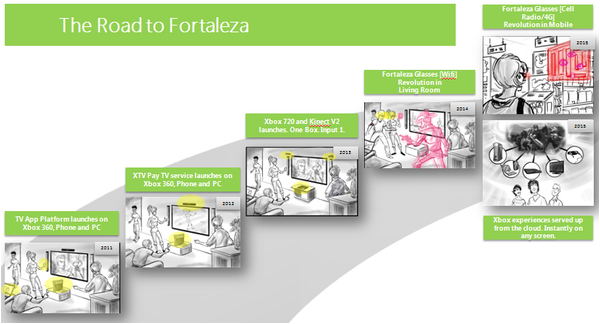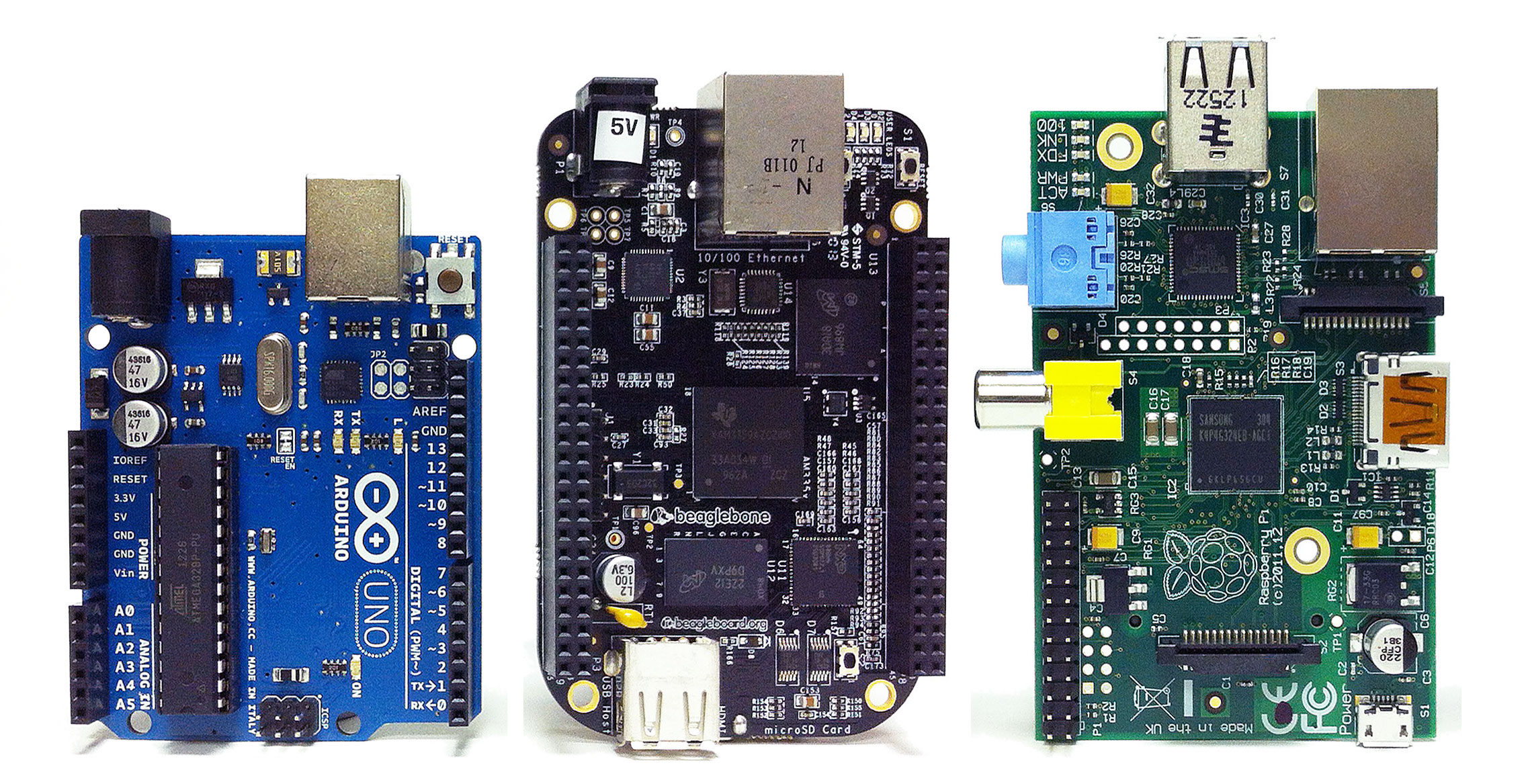
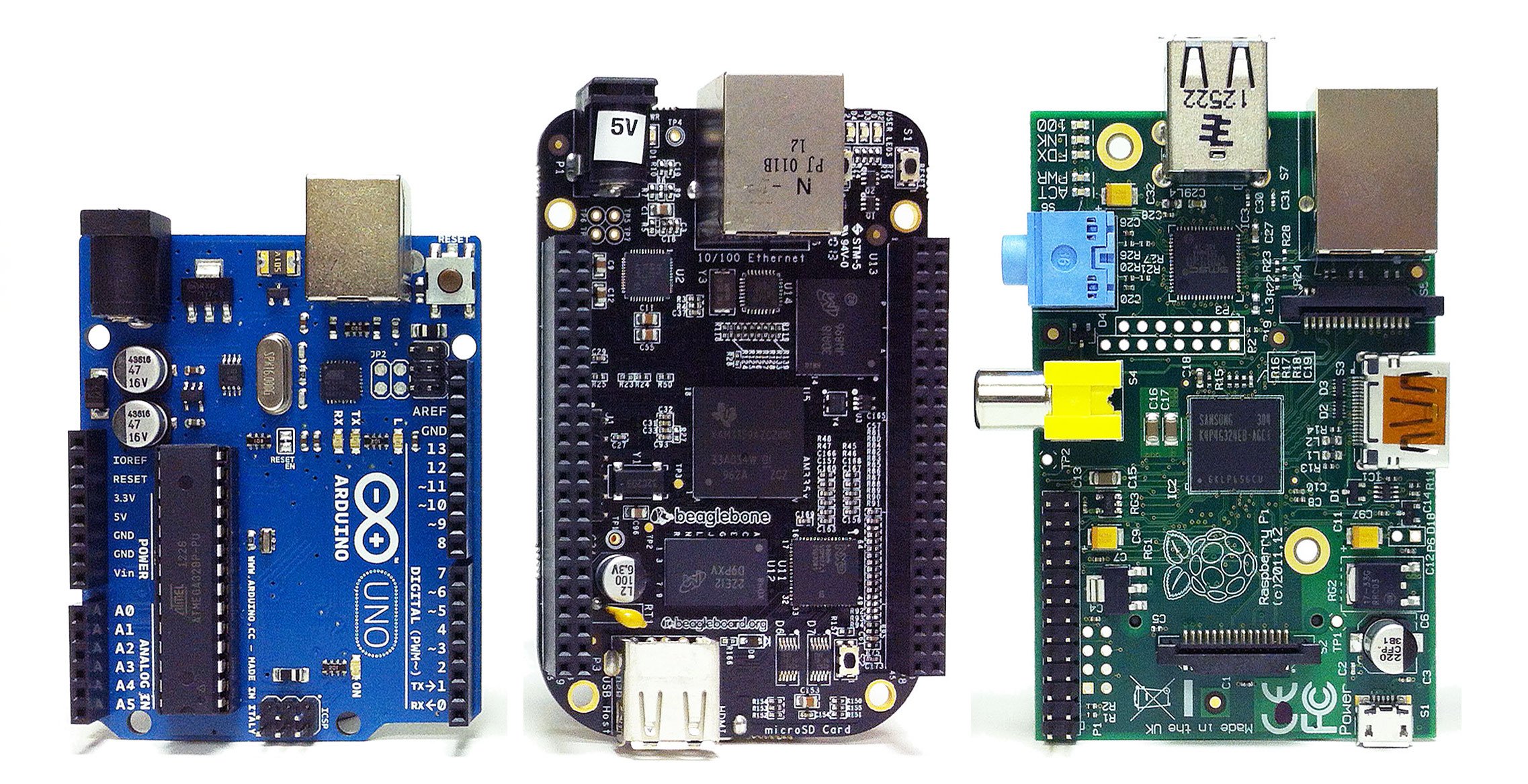
The biggest question every technical person asks in electronics is which platform is better or which platform is going to be best suited for the project? There are three biggest platforms which are used in electronics. These are Raspberry Pi, Arduino, and Beagleboard. They may seem similar at first glance but they work very differently. In this article, we will discuss briefly these terms and also we’ll look for their broad features and compare them in depth.
Raspberry Pi: Raspberry Pi is generally designed to act as a micro-computer. It consists of simple chips like RAM, CPU, USB ports or Ethernet ports and much more. It is used to create software applications from a low-level programming language through a high-level programming language. It also runs an Operating System. You can do various activities on your Raspberry Pi using a connected source such as power, mouse/keyboard or a display. Raspberry Pi can become the perfect source for learning various programming languages and also to interact with the interfaces.
Arduino: Arduino is the most popular microcontroller used by the technical engineers. This platform is loved for a reason, as this platform provides direct hardware interaction with an instinctive to create almost any program. This platform with the help of libraries and resources can help you to build anything. A microcontroller generally differs from the computer board. In a microcontroller, you set a program and control the functionality of the chip and the interfaces as you need. To program an Arduino you will need an open source software which can be run on your computer or laptop. You can connect your Arduino to your computer and program the Arduino. You can connect sensors, peripherals, circuits or hardware which can directly interact with the outside world. With the help of the program, Arduino will do anything you want it to do, without worrying. You can use Arduino IDE to write a code and burn it directly to the Arduino board.
Beagleboard: Beagleboard is an open source single board computer. It is perhaps the least known platform compared to Raspberry Pi or Arduino, but its capability is worthy of consideration to build many projects. It is a power Linux computer which can write Linux applications quickly with the help of a kit called Mentor Embedded Linux Kit. Beagle board uses ARM Cortex-A8 CPU with 1 GHz speed, configured with 128 MB to 512 MB RAM featuring a USB port, onboard GPU that supports OpenGL ES 3D acceleration. Also, it supports a list of an operating system such as FreeBSD, Ubuntu, SymbianOS with active development of Android.
Below is the quick comparison of these platforms which makes them valuable in their own type of applications. A table is shown below to outline the features of these platforms.
| Raspberry Pi | Arduino | Beagleboard | |
| Model tested | Model B | R3 | Rev A5 |
| Price | $35 | $29.95 | $89 |
| Size | 3.37” x 2.125” | 2.95” x 2.10” | 3.4” x 2.1” |
| Processor | ARM11 | ATMega 328 | ARM-Cortex A8 |
| Clock speed | 700 MHz | 16 MHz | 700 MHz |
| RAM | 256 Mb | 2 Kb | 256 Mb |
| Flash | SD Card | 32 Kb | 4 Gb (Micro SD) |
| EEPROM | 1 Kb | ||
| Input voltage | 5 v | 7-12 v | 5 v |
| Min power | 700 mA (3.5W) | 42 mA (.3W) | 170 mA (.85W) |
| Digital GPIO | 8 | 14 | 66 |
| Analog input | N/A | 6-10 bit | 7-12 bit |
| PWM | 6 | 8 | |
| TWI/I2C | 1 | 2 | 2 |
| SPI | 1 | 1 | 1 |
| UART | 1 | 1 | 5 |
| Dev IDE | IDLE, Scratch, Squeak/Linux | Arduino Tool | Python, Scratch, Squeak, Cloud9/Linux |
| Ethernet | 10/100 | N/A | 10/100 |
| USB Master | 2 USB 2.0 | N/A | 1 USB 2.0 |
| Video out | HDMI, Composite | N/A | N/A |
| Audio output | HDMI, Analog | N/A | Analog |
The Arduino and Raspberry Pi both were very inexpensive at the start which costs around 40$ and the cost of the Beagleboard was thrice the cost of Arduino. Also, you can see from the table, the clock speed of Arduino is much slower as compared to Raspberry Pi and Beagleboard which are 30 Times Faster. The RAM of Arduino is also 128000 times less compared to other platforms which have 262144 KB RAM. As you can see the comparison between them is already coming out and seems like Raspberry Pi has the upper edge as it is inexpensive and also a powerful platform. But its price doesn’t seem fit to the platform because to run the Raspberry Pi You will need to supply your own SD card, which will also cost around $3-10. Although Raspberry Pi and Beagleboard have similar clock speeds, in the test Beagleboard ran twice as fast as compared to Raspberry Pi. But as far as a beginner is concerned, Arduino has a performance level which will be best suited for them. Arduino is very simple to use which can run the program at a time and it is programmed in low-level C++. The Raspberry PI and Beagleboard both run Linux operating system which is capable to run multiple programs simultaneously and can be programmed in different languages.
As Raspberry Pi and Beagleboard both use flash memory (SD card for Raspberry Pi and Micro SD card for Beagleboard), this can become an interesting feature to use. With the help of this flash memory, you can create multiple projects on different memory cards and can use it later by swapping it. This will give you access to multiple configurations by swapping memory card and can continue with your project where you left off. You can use the different operating system by using different cards to swap in.
Choosing a platform as per your needs
- For beginner Level: For the beginner level, we will recommend you to use Arduino. Arduino is simple and uses a low-level programming language which will make it easier for the user to run the program one at a time. This will give a learning opportunity for the user as it has a simple interface which interacts with the external hardware. This board is built to interface with a variety of sensors and external circuits without using a deep learning of electronics.
- For the minimal size of the applications: If you want to build the application which is low in the size you can use Arduino board. While programming your microprocessor you can do advanced projects by using a small chip which is embedded in the board. You can create tiny gadgets which don’t even need a circuit board.
- For applications with access to the internet: If you are looking to create an application which uses both Ethernet and USB interfaces, you can go for Raspberry Pi and Beagleboard. You can easily connect to the wireless network via a USB port or an Ethernet port. As these platforms support the Linux Operating system, they provide more advanced networking configuration.
- For applications that interfaces with external sensors: For this attribute, we will recommend Arduino and Beagleboard. As both of them operates at different voltages which makes it easier to connect with the external sources. It will be simple to connect components as they both have an analog to digital interfaces.
-
- For an application which uses GUI: Raspberry Pi will make it simple for you as it provides HDMI output. Using HDMI port you can directly connect your board to your TV. By plugging your peripherals, you will have a fully functional computer GUI.
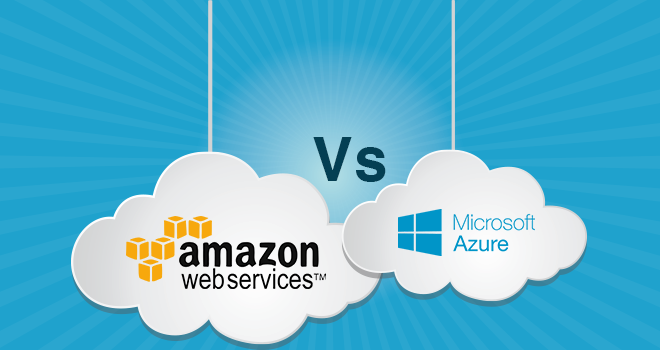
AWS vs Azure - Which one is the most suitable for your business?
Amazon Web Services and Microsoft Azure public cloud, arguably have the most elaborate and defined set of services to offer. Although there are other...
